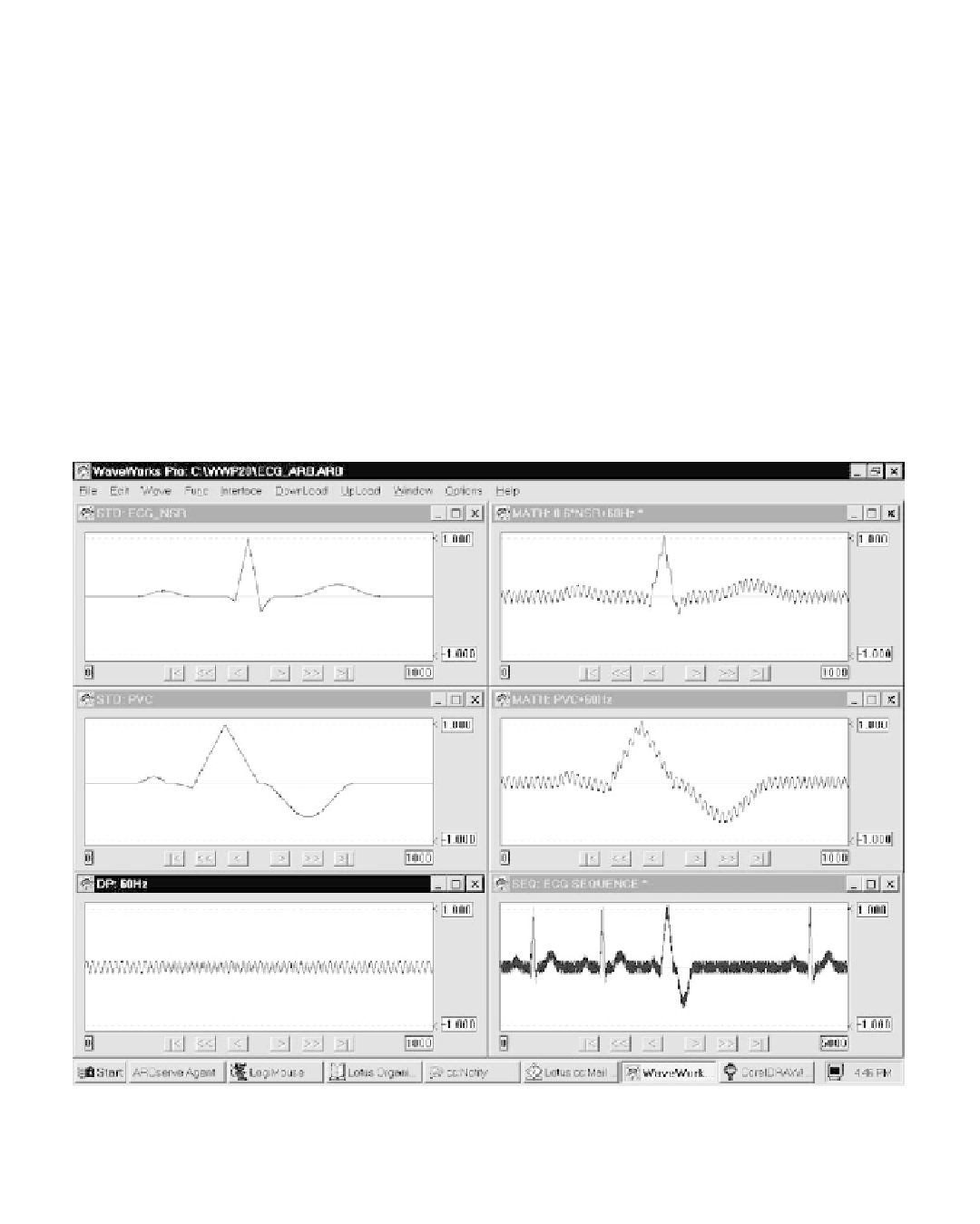Biomedical Engineering Reference
In-Depth Information
Although short Basic programs or numerical processing packages such as Matlab can be
used to generate waveform data, truly
flexible waveform creation is possible only through
dedicated software. One of our favorite packages is Pragmatic Instruments' WaveWorks
Pro since it of
fl
ers a very intuitive environment for the creation of waveforms from a com-
prehensive menu of standard waveform templates, math operations, and transfer functions.
Waveforms can also be imported from other programs or uploaded directly through GPIB
or RS232 from popular DSOs. In addition, waveform synthesis and analysis can be per-
formed in either the time or frequency domains.
Figure 6.17 presents an example of how easy it is to create waveforms with a waveform
design package such as WaveWorks Pro. The software has 30 standard waveshapes with
programmable parameters. These alone provide immediate solutions for the generation of
test waveforms for general-purpose applications (e.g., sinusoidal, square, triangular
waves), communications testing (e.g., AM, FM, BFSK, QPSK, NTSC waveforms), as well
as other signals for advanced signal processing and control (e.g., sin(
x
)/
x
, ECG waveform,
digital and analog noise). After a waveform is de
ff
fi
ned, it can be modi
fi
ed using the 20
prede
ned transfer functions or 13 mathematical operators. Once the desired waveform is
created, an FFT-based spectral estimator of
fi
ers frequency analysis with the possibility of
spectral editing and IFFT-based transformation back into time domain. Finally, a long and
ff
Figure 6.17
It is easy to create complex waveforms with Pragmatic Instruments WaveWorks Pro. For example, a signal for testing elec-
trocardiography equipment can be created by first defining the basic components of the waveform from predefined templates. On the left: a
beat corresponding to the heart's normal sinus rhythm (NSR), a premature ventricular contraction (PVC), and 60-Hz sinusoidal interference.
A seamless link of the signals “contaminated” by 60 Hz (right) results in a realistic-looking ECG containing normal beats mixed with PVC
episodes followed by a long compensatory pause before returning to NSR.


Search WWH ::

Custom Search